Norm of water pressure in the faucet: how to ensure normal
Sooner or later, each of us is faced with a situation where the water in the kitchen or in the bathroom is a very thin stream. And before taking corrective measures, you need to figure out why there is a weak water pressure in a tap, what it should be, and what we can do in principle.

System pressure
Causes of pressure loss
Water pressure in the water supply system is one of the most important parameters characterizing the operation of pipelines. Insufficient pressure leads to the fact that water enters the apartment in too small volumes, and excessive can cause a failure of household appliances and valves.
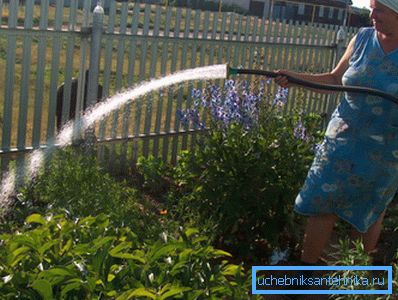
And if we rarely hear about overpressure in pipes, then a small water pressure in the faucet is a very common problem:
- Particularly often, residents of the upper floors of apartment buildings suffer from it. - with the active fence on the lower floors of the incoming water is simply not enough, and the pressure in the pipes drops.
- Another reason why the water pressure in the faucet was gone may be a malfunction of the pipeline.. At the same time, large volumes of liquid enter the external environment and simply do not reach the point of consumption. Typically, such situations are sporadic, but if the communications in your area are worn out, then a drop in pressure during an accident will be quite common.
- Minimum head values in private homes usually coincide with the irrigation season.. Firstly, watering usually occurs during the hottest months, and the water level in the water supply sources drops, and secondly, a one-time large volume selection is also not in vain.
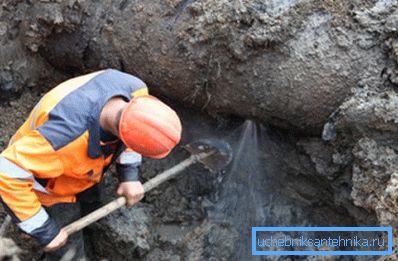
Note! Sometimes utilities deliberately reduce the pressure to a minimum, trying to extend the life of the old pipes. In this case, only a collective appeal to the appropriate authorities will help, but even then you should not count on a quick solution of the problem.
Regulatory Values
To understand the situation and understand when you need to solve the problem with your own hands, and when you should contact the operating office, you should study the legislatively fixed values of water pressure in hot and cold water supply taps.
Here it is worth being guided by such figures:
- The optimal, according to current regulations, the pressure in water supply pipelines is 0.4 MPa, which is equivalent to 4 atmospheres (approximately 40 m of water column).
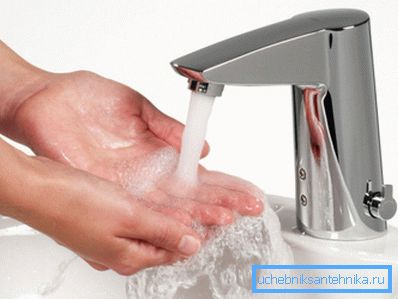
- In fact, the actual pressure is largely determined by the position of the water intake point, and usually ranges from 2 to 5.5 atmospheres. This pressure is quite enough for the system to function normally without excessive load on the shut-off valves.
- SNIP 2.04.01-85 also regulates the upper limit of permissible pressure in pipes with water. It is located at 6 atmospheres. If this value is exceeded, the probability of leakage increases significantly, both at the joints of pipes and in taps, valves, etc.
Note! According to the same SNIP 2.04.01-85, absolutely all pipes must withstand a short-term pressure increase of at least 10 atmospheres, otherwise the system simply will not withstand regular crimping. To the main communications requirements, of course, much stricter
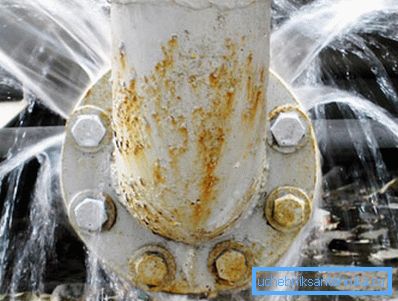
Independently calculate the optimal pressure at the entrance to the system is also possible.
To do this, use the formula P = 10 + H * (h - 1), where:
- P - the desired value.
- H - the height of one floor of the building.
- h - the floors of the highest house in the territory, powered by this branch of the water supply.
In addition, usually the instructions for household appliances connected to the water supply, contains the requirements for the allowable pressure.
The optimal values are:
- For washing and dishwashers - at least 2 atmospheres.
- For baths with hydromassage and jacuzzi - at least 4 atmospheres.
- For automatic fire extinguishing systems - 1.5 atmospheres and more.
It is very important to comply with these standards, since at low values the devices will not be able to work efficiently, and at high values they can simply fail, causing the apartment to be flooded.
Pressure and pressure measurement system
In search of an answer to the question of why the low water pressure in the faucet, many are studying the regulatory documents on their own. And here there can be a difficulty associated with the use of different units of measurement, which, in essence, describe the same processes.
In fact, everything is quite simple, since practically everyone can carry out the transfer of units:
- Actually pressure, as such, is usually measured in meters of water column.
- Instead of the pressure itself, pressure in the system is often measured, which is usually measured in megapascals (MPa).
- In this case, quite often, instead of MPa, such units as the atmosphere (0.1 MPa) or Bar (1.09 atmospheres) are used.
Independent solution to the problem
Features and functioning of the plumbing in a private house
Almost all of the above is true primarily for apartment buildings. However, in private households, issues of insufficient pressure in the system or low pressure in the pipes are quite acute.
There are several aspects to this:
- First, the pressure itself is provided either by raising the water to a sufficient height (usually using an expansion tank in the attic), or by constantly working the pump. In the second case, the installation of an automatic adjustment system is mandatory: yes, the price is quite substantial, but it allows you to simply use the crane without performing preliminary manipulations on starting the pump and equalizing the pressure.
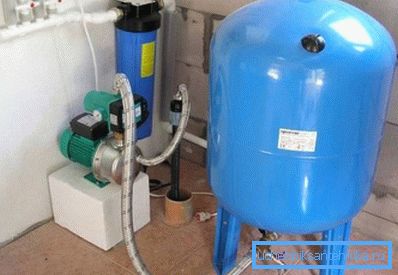
- Secondly, the limiting factor is the well or well flow rate, i.e. the amount of water a source can provide per unit of time. If we have a low-power well, then we will have to install a sufficiently large accumulator tank, otherwise the liquid will simply not be enough to fill the pipes with intensive selection.
- But the owners of artesian wells with high internal pressure to decide how to increase the water pressure in the faucet, usually not necessary. Here the problem is of a different nature: a significant flow rate leads to the fact that the pressure in the system rises to 6 atmospheres and above. Accordingly, it is necessary to reduce it, otherwise the plumbing will quickly wear out.
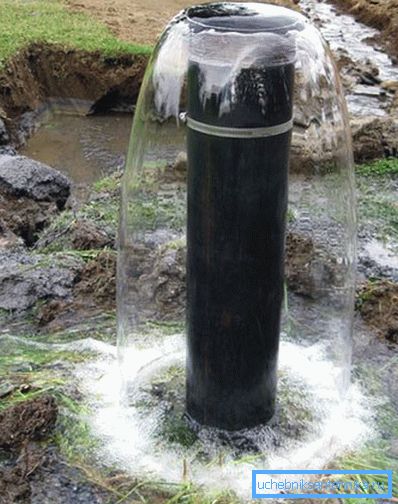
However, usually these nuances become apparent at the design stage of the water supply system of a private house, so instead of taking emergency measures, it is worthwhile to think over the little things in advance and take care of the selection of suitable equipment.
Ways to increase head
And yet, what to do - if the water pressure in the tap is bad?
The situation can be corrected in several ways, but their effectiveness can be very different, and largely depends on external circumstances:

- The simplest and most obvious solution is to make an application to an organization that supplies water to your home. After that, they are obliged to send a specialist to perform measurements, and either eliminate the system malfunction (if this is the case) or raise the pressure in the entire building.
Note! If it is not possible to provide optimal pressure, recalculation of the cost of utilities is also allowed. However, in this case, you cannot do without the help of a professional lawyer, since this issue will have to be resolved in court.
- If the pressure drops are sporadic, then you can install a pump that increases the pressure. Such devices are quite energy-intensive, and their efficiency is low (if there is simply no water in the pipes, the pump also has no place to take it), but you can use them as an auxiliary tool. In any case, you will have better pressure than your neighbors.
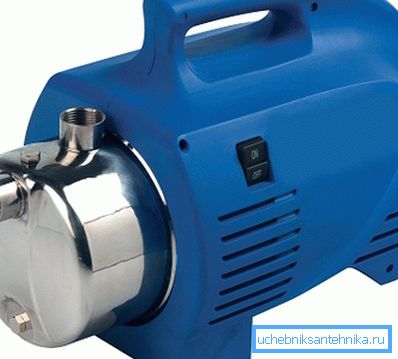
- If this does not help, then you can go for serious expenses and install a small pumping station in the apartment with a battery tank. However, the financial benefit from this acquisition will be doubtful, so that resort to such a solution is only a last resort.
In a private house, everything is much simpler:
- We regularly clean the source, as silting reduces production.
- We control the tightness of the well head.
- With increasing consumption (for example, during the watering season) we use more powerful pumps.

Conclusion
Having understood why there is no water pressure in the faucet, and finding out how much the actual values differ from the standard, you can begin to correct the situation. However, in this case only the owners of private houses have a “field for maneuver”.
And everyone who depends on central water supply will have to enter into correspondence with the responsible organizations. You can study the problem of insufficient pressure in pipes in more detail by viewing the video in this article.